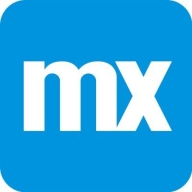


Find out what your peers are saying about Microsoft, Amazon Web Services (AWS), Akamai and others in Infrastructure as a Service Clouds (IaaS).
It's not that they're really firing that personnel, but they can often focus on the core that really matters instead of repetitive processes in Excel forms and all of the overhead and human error that comes with that.
The value for money is good, and Microsoft Azure has positively impacted our operational costs.
When we use Microsoft Azure, it provides enhanced security from our perspective, though I am not certain about the financial return on investment or benefits for our users as I do not have that information.
Reaching out to them and talking is different from receiving a complete solution to your problem.
We have a direct line to Amazon AWS, with premium support and AWS members located within the company.
Amazon AWS has good technical engineers available, making their customer service reliable.
I haven't often needed to seek direct support from Mendix teams as their online resources and knowledge database are comprehensive.
Mendix provides proper support, troubleshooting options, and a helping community.
If it's about having an issue that I can't solve despite being a Mendix expert and having tried every single bit and piece, support can feel like a stone wall.
Microsoft needs to engage L3 and L2 in support when specified in service tickets.
The support from Microsoft Azure is good.
Regarding technical support from Microsoft, I find they are responsive and helpful, depending on which support package you're on.
The scalability of Amazon AWS is excellent.
Amazon AWS provides strong scalability features, but the scaling process could be made more straightforward.
Scale-out is usually good with Amazon AWS.
Mendix supports scaling well with its comprehensive online documentation and learning paths.
Mendix provides options for handling scalability and maintainability through features like validation, workflow and nanoflow minimization, and user components, enabling projects to be easily managed and scaled.
Also solutions processing data at scale, talking about one million packages a day.
Microsoft Azure is not just one product; it is a platform with multiple products within Microsoft Azure, and I would say it is scalable and would rate it a nine.
The scalability of Microsoft Azure is excellent for growth and adaptation, depending on company requirements.
It has different kinds of designs that allow for management and deployment in multi-zones, offering both scalable and non-scalable options.
If I am spinning up any managed service from the console, sometimes it fails to start up, and there will be no information about why it failed.
I recently encountered an issue with deploying applications on the Mendix sandbox, which took a week to resolve.
We noticed a few critical servers went down due to a Microsoft Azure-end hardware issue.
We are now migrating clients without the zoning into mandatory multi-zone deployments, so if one zone goes down, their application and database remain live.
Microsoft Azure is quite stable, but recent outages and security issues have slightly decreased my confidence.
Amazon AWS could improve its user interface to make it more user-friendly, especially for people who are not highly technical.
When using scripts for APIs to fetch data, they don't match the data exactly with the request.
If I create a Glue job, that will create S3 buckets and other resources that have cost implications, but once I clean up a Glue job, it does not delete the other accessory resources.
Access to the database is limited in Mendix's public cloud, preventing direct database interaction or inspection.
I choose a seven mainly due to the issues we've faced with slowdowns and bugs during development, while runtime has been very stable.
Native development is not very strong, and some developer tools are missing, such as shortcuts to edit multiple variables.
Recent outages and security issues are also a concern, causing a decrease in confidence, especially when partnering with third-party companies.
The administrative side is suitable for technical people, but our finance and HR super users find it less user-friendly, as they prefer drag-and-drop features to build their own solutions without contacting IT.
There is still room for improvement in terms of pricing.
After three to four years, if you are not managing it correctly, you will be paying more than an on-premise solution, which applies to all cloud providers, so you must regularly maintain and manage for efficiency.
Currently, Amazon AWS is known to be on the higher price range because popular and in-demand services often come at a premium.
The app license costs between $13,000 to $14,000, which is prohibitive for startups.
My experience with pricing, setup cost, and licensing is reasonable;
Microsoft solutions might be cheaper than some services like AWS, but some solutions may be more expensive depending on the services compared.
Copilot is expensive based on recent pricing for our POC.
They have discounts and also provide promotions for a three-year reservation which comes with significant discounts on the infrastructure part.
Amazon AWS offers flexibility and scalability.
One aspect I appreciate in Amazon AWS is their support team, which is excellent.
Amazon AWS offers numerous options to choose from in terms of compute, memory, and instance types.
Mendix's integration capabilities are impressive, allowing for rapid and on-the-fly integration of almost anything imaginable.
The best features that Mendix offers are proper guardrails that prevent starting from scratch, ensuring a certain level of security, user experience, and standardization for implementing workflows, API integrations, and how you set up your domain model.
Mendix provides the ability to create solutions that fill gaps that I would otherwise be unable to address with standard software.
Power BI, another feature of Azure, is extremely elegant and has robust features that support forecasting using R and Python.
If Microsoft gives a report, such as a server performance report in a detailed way, which shows what is consuming more CPU, memory, and disk IO, and network utilization during a particular time, it would be helpful to visualize that information.
What is very interesting in terms of scalability is the automatic possibilities to provision some new machines to be able to absorb the number of users we have in the system.
| Product | Market Share (%) |
|---|---|
| Amazon AWS | 16.6% |
| Microsoft Azure | 14.9% |
| Alibaba Cloud | 12.0% |
| Other | 56.5% |
| Product | Market Share (%) |
|---|---|
| Mendix | 15.2% |
| OutSystems | 16.1% |
| Salesforce Platform | 7.5% |
| Other | 61.2% |
| Product | Market Share (%) |
|---|---|
| Microsoft Azure | 14.9% |
| Amazon AWS | 16.6% |
| Alibaba Cloud | 12.0% |
| Other | 56.5% |



| Company Size | Count |
|---|---|
| Small Business | 131 |
| Midsize Enterprise | 48 |
| Large Enterprise | 112 |
| Company Size | Count |
|---|---|
| Small Business | 25 |
| Midsize Enterprise | 6 |
| Large Enterprise | 22 |
| Company Size | Count |
|---|---|
| Small Business | 140 |
| Midsize Enterprise | 53 |
| Large Enterprise | 148 |
Amazon Web Services (AWS) is an adopted cloud platform that offers more than 200 fully featured services from data centers located across the globe. This is a scalable, low-cost infrastructure platform in the cloud that is utilized by thousands of businesses of different sizes around the world. The product offers a wide variety of solutions for its customers, which allows them to launch applications regardless of their industry.
The most common use cases for AWS are:
Amazon AWS supports a global cloud infrastructure with AWS Region and Availability Zone models, which contribute to the high availability of enterprise applications running on the solution. Amazon AWS has an extensive array of products that serve different purposes, including:
The products and services that Amazon AWS delivers to these sectors provide a large computing capacity which is quicker and cheaper compared to building a physical server farm. Among the most popular services are Amazon Elastic Compute Cloud, also known as "EC2," and Amazon Simple Storage Service, also known as "S3."
Amazon AWS Features
The wide array of products that Amazon AWS offers consist of different functions that utilize cloud computing across different sectors. The features of this solution can be categorized in the following ways:
Amazon AWS Benefits
This product delivers various benefits across all industries that utilize its services. The greatest advantages of using Amazon AWS include:
Reviews from Real Users
Greg G., a chief executive officer at a tech services company, ranks Amazon AWS highly, as he states that the solution is flexible, scales well, and offers good stability.
A technology manager technology at a computer software company values Amazon AWS because it is extremely cost-efficient, easy to upgrade and expand storage with greatly improved interfaces.
Mendix is a low-code application development platform that helps your organization accelerate its application development lifecycle. The solution is designed to enable you to create software faster by abstracting and automating the development process for better business outcomes at speed and scale. Mendix has many key capabilities, including a tailored IDE for every developer, built-in collaboration tools for team development, feedback management, agile project management, the ability to build a truly responsive design across devices, and much more.
Mendix Features
Mendix has many valuable key features. Some of the most useful ones include:
Mendix Benefits
There are many benefits to implementing Mendix. Some of the biggest advantages the solution offers include:
Reviews from Real Users
Below are some reviews and helpful feedback written by PeerSpot users currently using the Mendix solution.
PeerSpot user Somnath G., Solution Architect and LowCode Practice Lead at a tech services company, says, "What I found most valuable in Mendix is that it's very much suitable for mobile apps such as native Android or IOS supported mobile apps. The multiple features of the platform are very, very attractive and very popular. Mendix has technical features such as microflows and nanoflows. You can also access data models in the platform. These are the features that are very, very strong in Mendix. I got my hands dirty on other low-code platforms, but I have not seen such strong features in them compared to the microflows, nanoflows, and data model access that are in Mendix, including creating and integration. The platform has out-of-the-box adapters or out-of-the-box-connectors that you can integrate with different interface applications such as SAP, Salesforce, Oracle EBS, etc."
Sameer V., Consulting Manager at Deloitte, mentions, “Their native mobile capability is very good. In general, the way they launch the product has been great. Their product launching strategy is far better than any other platform. I work in OutSystems and Mendix. They tend to be more on the legacy side, OutSystems. With this solution, the product launching strategy is very, very agile. I really like when they roll out their updates, which are very, very frequent.”
Robert B., Solutions Architect at a computer software company, explains, The solution is just very quick and responsive. The initial setup is very straightforward, and those implementing the product do not have to be very technologically advanced in order to manage the process.”
Microsoft Azure integrates services and offers flexibility, ensuring compatibility with diverse environments. Its scalability, security, and cost-efficient features enhance deployment and management, making it ideal for infrastructure services and application hosting.
Azure provides a comprehensive suite of tools for application deployment, virtual machine management, and data analytics. It allows seamless integration with Power BI and offers a user-friendly interface supported by detailed documentation and technical support. Though users appreciate its capabilities, they sometimes face challenges with costs, setup, and interface complexity, alongside integration and performance issues. Frequent updates and a learning curve are also noted, though Azure's cloud-based security and scalability remain critical for disaster recovery and business continuity.
What are Azure's key features?Microsoft Azure is widely implemented in industries like financial services, healthcare, and logistics for hosting enterprise applications and vital services. Companies utilize its capabilities for IoT applications, DevOps, and Kubernetes clusters, benefiting from its cloud migrations, data analytics, and active directory support.